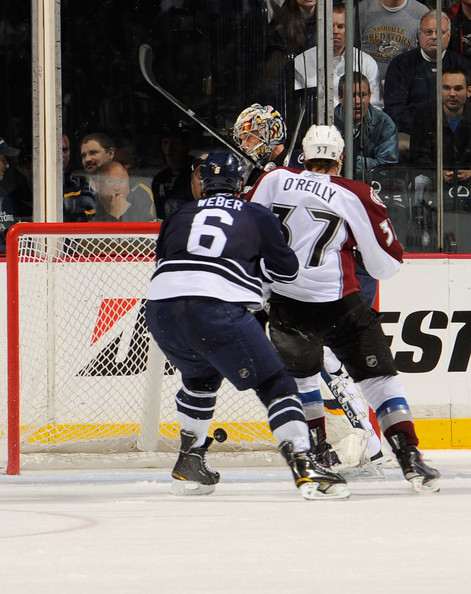This site has devoted its share of attention to annual prospect and or organizational prospect rankings, so it makes sense to examine two separate ESPN Insider articles.
The first is a Corey Pronman piece (note: paywall) that assesses and ranks each NHL organization based upon its collection of talent aged 23 or younger.
Unlike his organization prospect rankings that were made available on Hockey Prospectus earlier this summer, Pronman opted to lump organizations into six tiers (note: I’ll put the number of teams fitting each tier in parathenses): The Top Tier (3); Up-and-Comers (10); Staying Power (2); Middle of the Road (5); Need a Little Extra (7); and Trouble on the Way? (3)
The Sens fit into the Up-and-Comers tier which includes teams that are, "not the very best regarding young talent, but they are just a step below. They have enough young high-end players to spark an organizational turnaround, and that has already started for some."
Pronman, who had rated Ottawa’s current group of prospects –defined as a player who has 25 or fewer regular season games played during the last NHL season, or 50 or fewer career NHL regular season games played – as the 19th best in the NHL earlier this summer, gave the Senators a more favorable rating here.
"Mika Zibanejad was a top pick a couple of seasons ago and is trending toward being a top-line, do-it-all type of player. He has the skill, hockey sense and grit to be a great player for quite a while. Jared Cowen hasn't put it all together yet, but the new extension Ottawa gave him is a testament to its belief in his physical tools. On the prospect front, Cody Ceci is a very gifted offensive player from the back end, Robin Lehner is an elite goaltending prospect, Jean-Gabriel Pageau had a very strong first pro season, while Curtis Lazar and Mark Stone are notably above-average prospects. The Sens also have a few other high-risk/high-reward prospects in their organization. The trade of Silfverberg and Stefan Noesen was a blow to their young core, but the reward of getting Bobby Ryan in return was deemed to be worth it."
Sounds about right.
As Bryan Murray noted during his interview on the Team 1200 yesterday, the Senators cupboard is stocked with prospects who may lack the high ceilings profiles that prognosticators salivate over but many of them are on the cusp of being NHL-ready (if they’re not there already).
Even if they lack the pedigree that other top prospects have, they do afford the Senators a considerable degree of flexibility here – in the sense that management can decide upon parlaying their stockpiled talent to bring in better talent or this depth allows the organization to move some of its parent NHL talent for future assets.
In the second ESPN Insider piece (note: again, paywall) entitled ‘NHL Future Power Rankings’, a weighted formula was used to project future success three years from now.
ESPN laid out the process as follows:
To construct the rankings, we consulted with former NHL assistant general manager Frank Provenzano, who helped develop our categories — as well as how they were weighted — based upon his experience working in the front office for multiple NHL teams.
Then we asked a panel of six analysts to rate every NHL team in four key categories deemed most important to future success: roster, prospects, cap/contracts, owner/GM/coach.
Broken down further:
• Roster: An assessment of the team's roster under contract at the NHL level, taking into account both core and complementary players. More weight is given to those on the roster age 26 and younger, as well as those under contract through 2016-17. Value of contracts is not taken into account in this category, just talent.
• Prospects: A valuation of the club's talent in the pipeline, including those still in juniors or overseas. Also, an assessment of how well the team does in identifying and developing young players.
• Cap/Contracts: Both the amount of cap space flexibility, and the amount of contract flexibility is taken into account in this category. After all, having lots of no-movement clauses can be as bad as having little cap space.
• Owner/GM/Coach: Several factors taken into account here: does the team spend to the cap? Are they in a market that is desirable to free agents? How well have they done in acquiring suitable talent via free agency and trades? Do they have quality (and stability) in the coaching staff?
The average of our panelist's votes were then calculated, and those are visible in the bar graphs for each team, rounded to the nearest hundredth.
To tabulate the overall score, we weighted the categories as follows: 35 percent for Roster, 25 percent for Prospects, 20 percent for Cap/Contracts and the remaining 20 percent for Owner/GM/Coach. After all, it's a good thing to have smart people owning, running and coaching the organization (and managing the contracts), but a team isn't going to get very far without talent on the ice.
The final score is just a sum of the weighted value of each category, and these are on a scale from 1 to 10. No one got a perfect 10; likewise, no one got an atrocious 1, although there were instances of each of those grades for teams on certain voters' ballots.
Using these categories, the panel ranked Ottawa within their top ten.
What?
Eugene Melnyk is the reason the Senators didn't grade higher in the owner/GM/coach category, probably costing the Senators a higher placement in the overall rankings as well?
I'm shocked. Shocked.
Add The Sports Daily to your Google News Feed!
